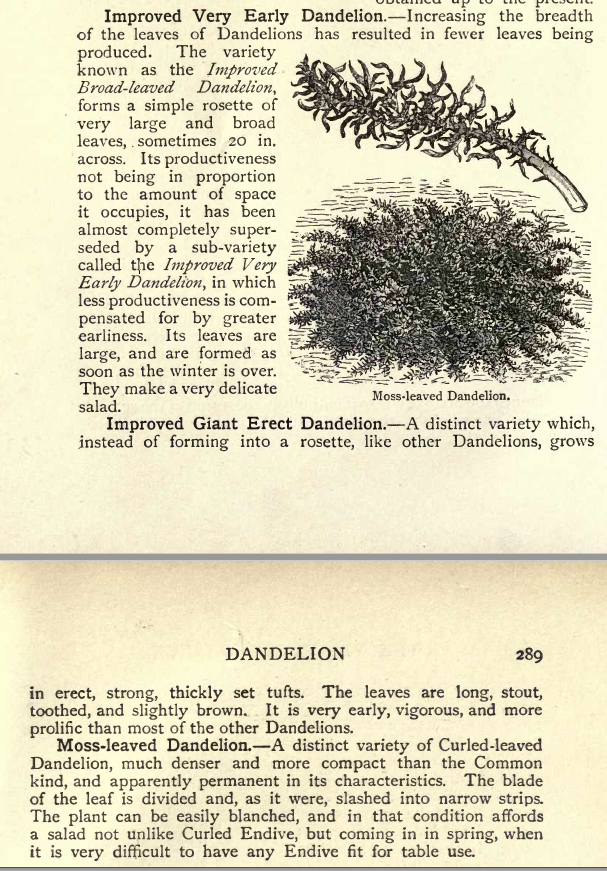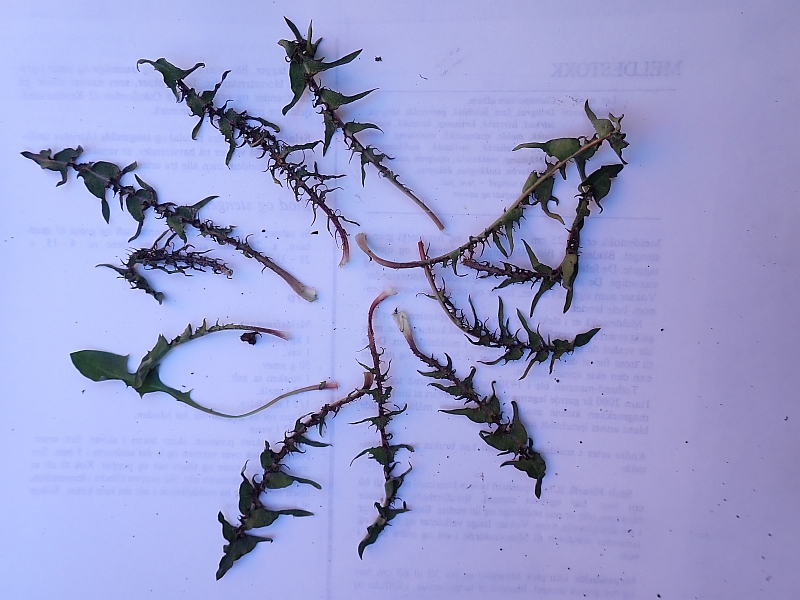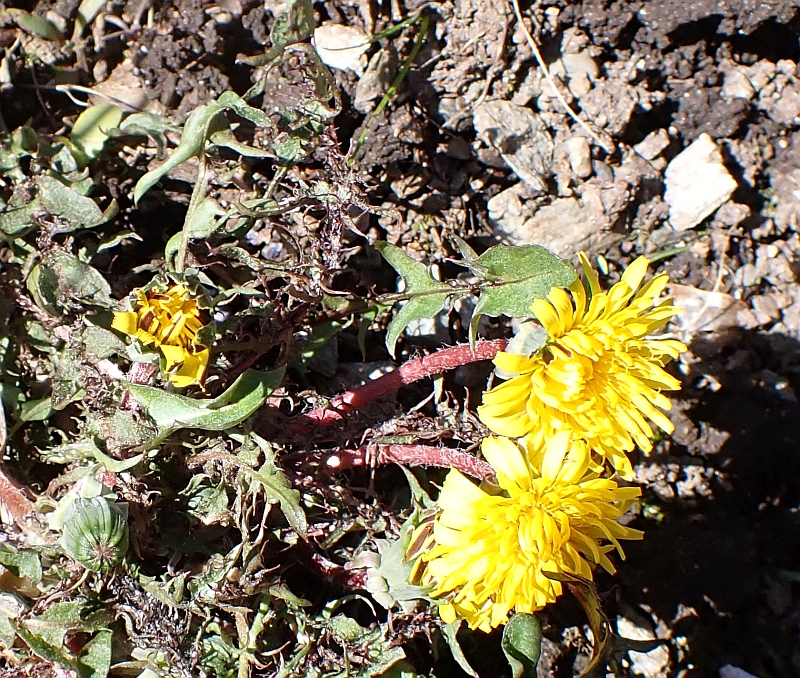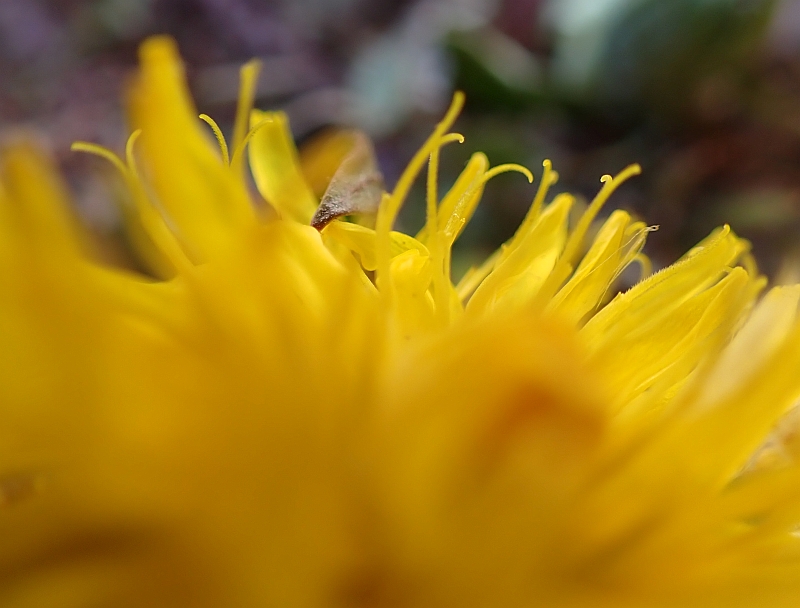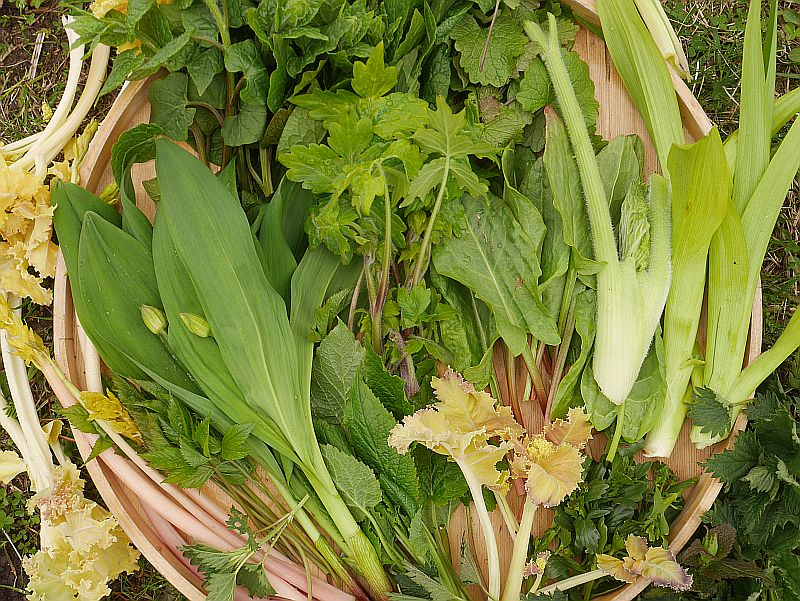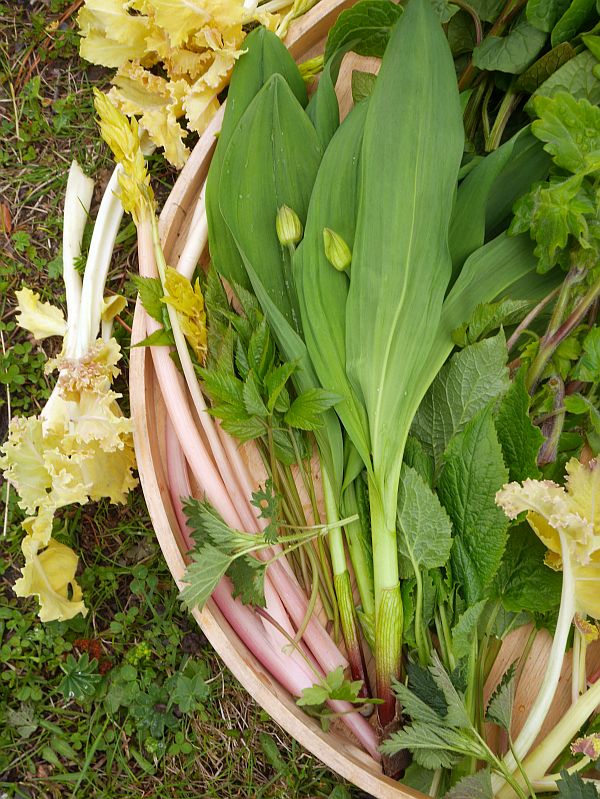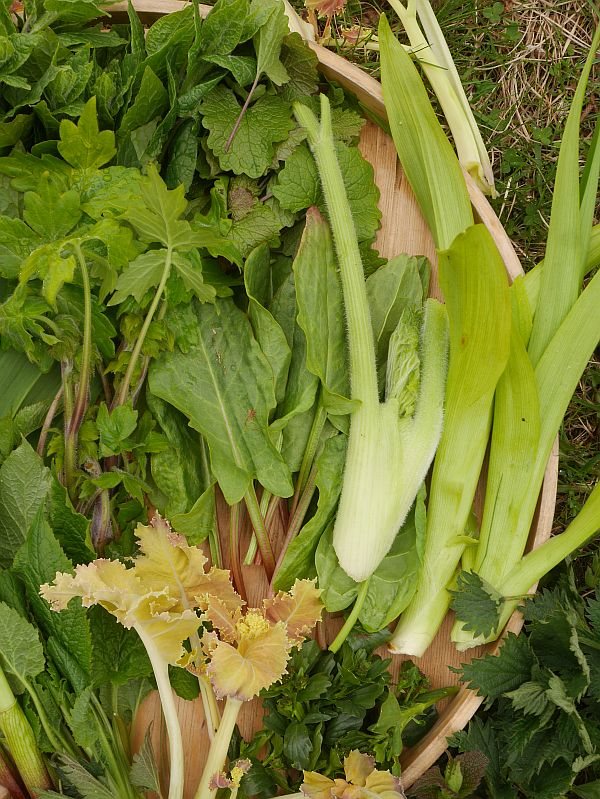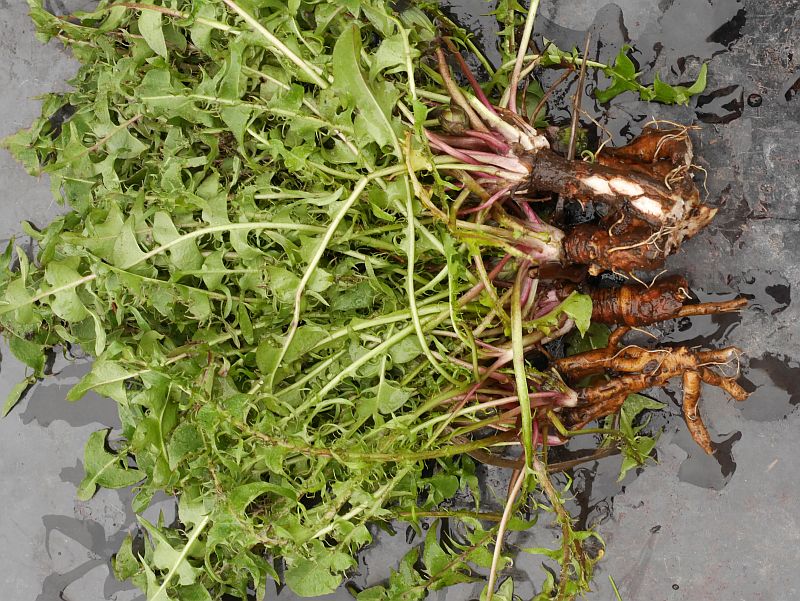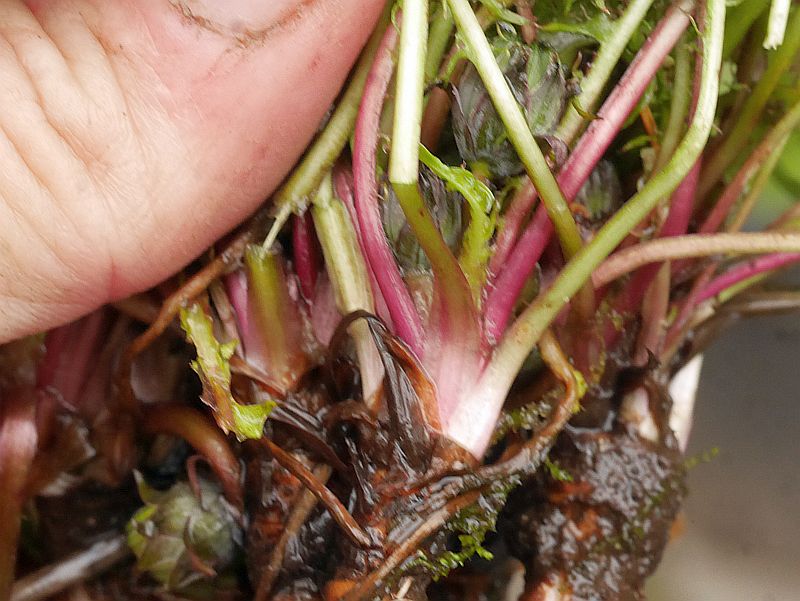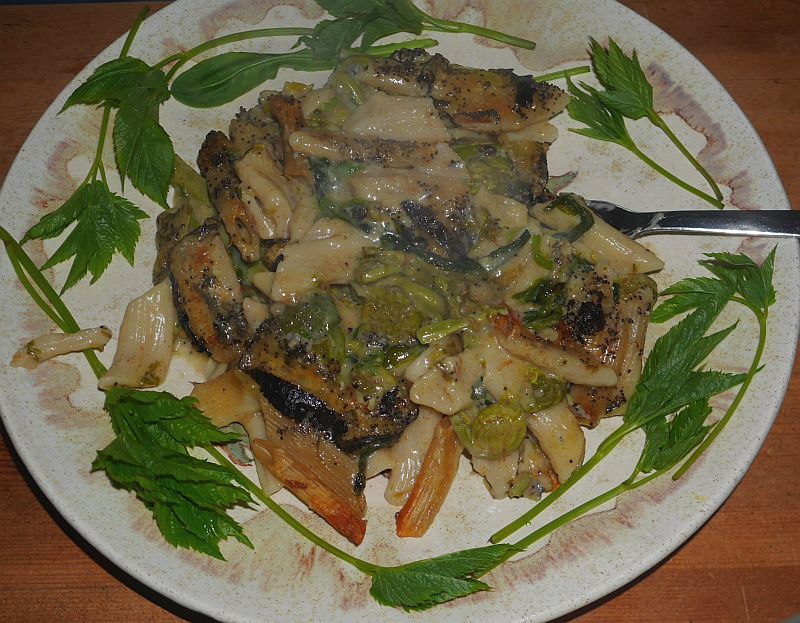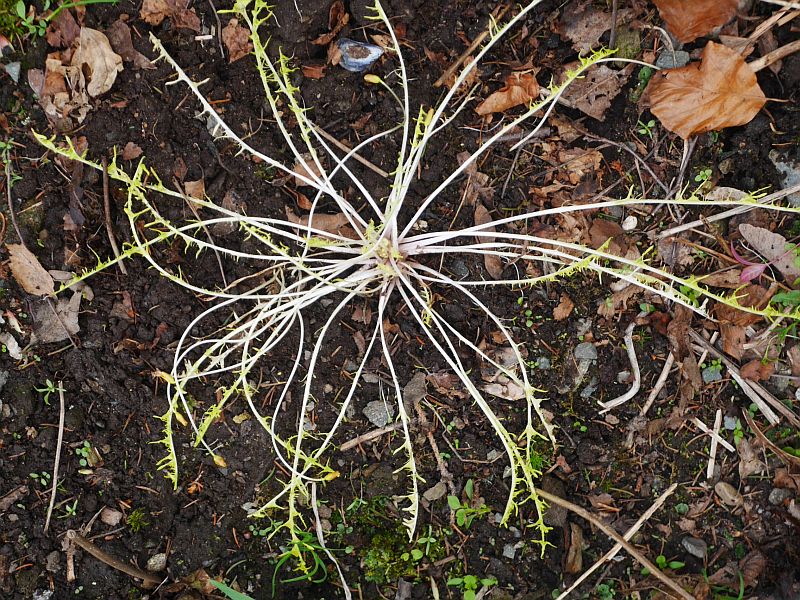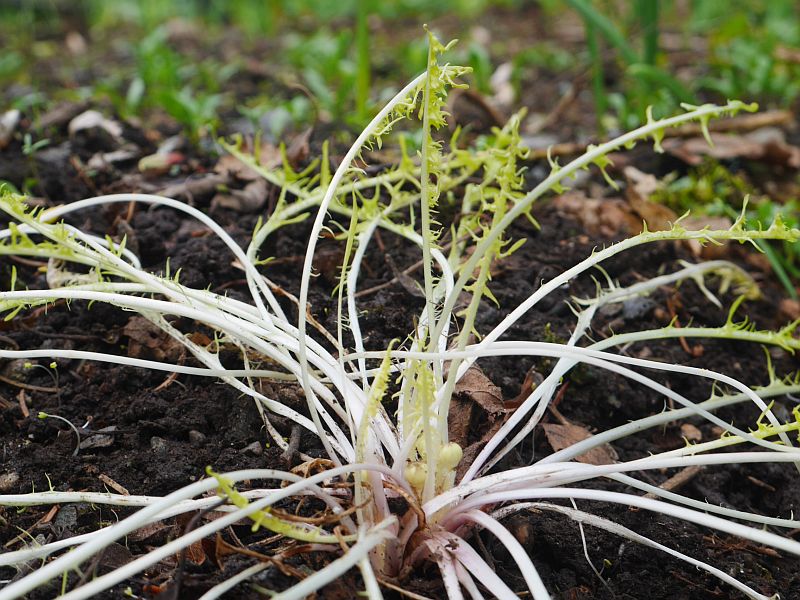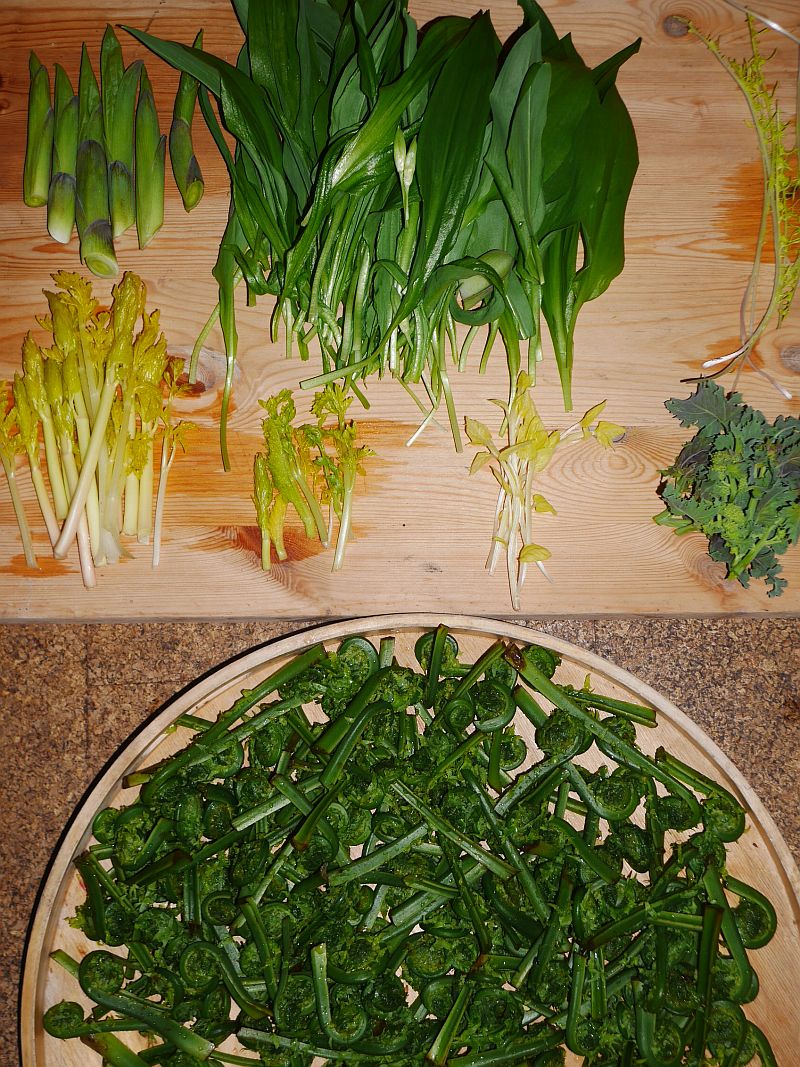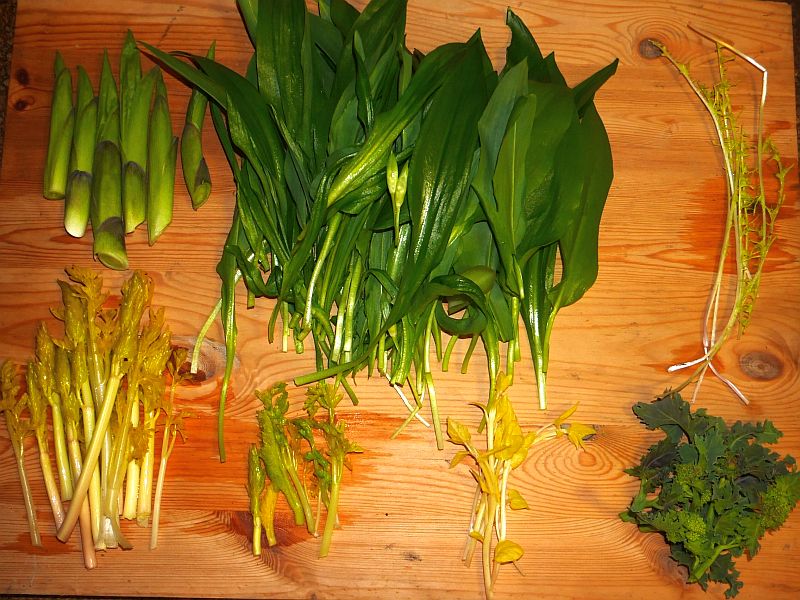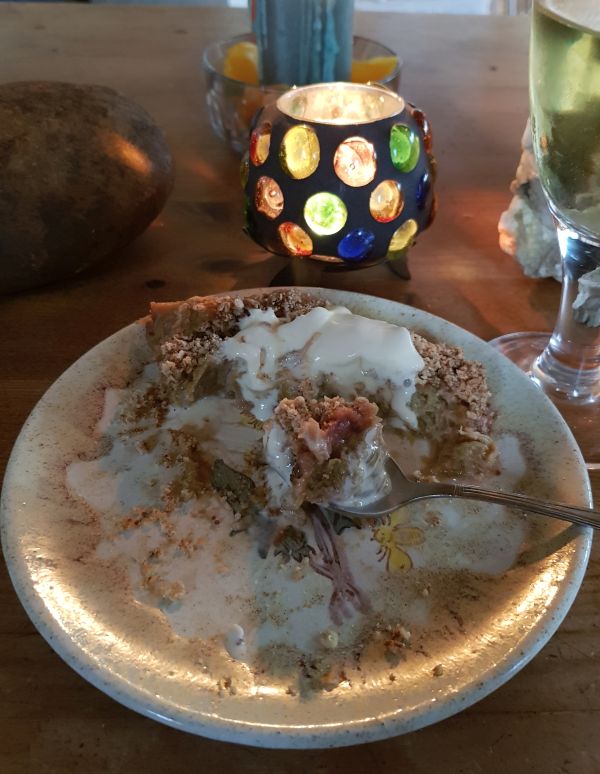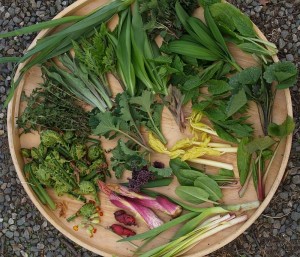Please subscribe to my youtube channel!
1. Perennial Edge https://youtu.be/qRsQt_U0Ujo
The edges of my annual beds in the garden are not so productive as they are drier because of overhanging branches of the hazel,/birch/aspen woodland adjacent to it. I therefore allow perennial vegetables to colonise these areas as they are much less impacted by summer drought conditions, growing most actively in the spring time. In this video I show garlic (hvitløk) being grown as a perennial together with Hablitzia tamnoides (trained up into the trees), stinging nettle (Urtica dioica), hogweed (bjørnekjeks), dandelion (løvetann) and ground elder (skvallerkål). This area at the same time supports a large biodiversity of, in particular, insects.
2. Hydrophyllum in the World Garden https://youtu.be/gLC7XLYTG5A
The genus Hydrophyllum or the waterleaves consists of seven or eight species restricted to North America, half of which are restricted to the east and half at higher elevations in the west. I have best experience with Hydrophyllum virginianum (Eastern waterleaf) and Hydrophyllum tenuipes (Pacific waterlef) and both are growing well as you can see in the World Garden (Verdenshagen). We see both in the video at harvest time and introducing a beginning battle for dominance with fellow Appalachian rhizomatous Rudbeckia laciniata (Cherokee greens or sochan). The young and the tips of stems are best in salads; having a mild sweetest taste, the older leaves usually being cooked (boiled or steamed). I usually use them mixed with other seasonal greens in salads and vegetarian dishes. Indian salad or Shawnee (no, not Pawnee which I say in the video) salad and west coast H. tenuipes is known as squaw lettuce. The name John’s cabbage is also used in the east, vouching for the fact that white settlers also learned to use this spring vegetable. In 1818, William Barton wrote that, ‘The Indian Salad and Shawnee Salad of Kentucky and Ohio are praised by the white settlers’, and, ‘The young shoots are praised by all who eat them’. Please read more in my book Around the World in 80 plants!
3. The Oldest Habby Bed https://youtu.be/_ErX8IcTq04
My oldest Hablitzia tamnoides (Habby) is now 23 years old and rapidly approaching 1/4 of a century and just as vigorous as ever. In this short video I introduce some of its offspring which love the shady sheltered conditions in this plant of the garden. I reckon that blanched Habby shoots would be a winner in gourmet restaurants, a bit like Jet de Houblons (blanched Belgian hop shoots). Also starring probably Smyrnium olusatrum (Alexanders / sorte løpstikke), Allium paradoxum var paradoxum (few-flowered leek) and Viola odorata (sweet violet / marsfiol)
4. Prunus tomentosa at Være https://youtu.be/fbJmv-d9Gug
One of the more unusual berry / fruit bushes in the collection at the Væres Venners Conmunity Garden in Trondheim is the very hardy Nanking cherry / kinesisk kirsebær (Prunus tomentosa), a native to northern and western China (including Tibet), Korea and Mongolia. As the video shows, it is already in full flower and is therefore valuable for both wild bees and bumble bees in early spring, but it was a bit too windy when this video was made on 24th April 2025. We see two varieties purchased from Steen and Wormsen, a nursery in northern Norway who imported from a great plant nusery in Finland: Blomqvist’s Planteskola. The variety with snow white flowers is Snøhvit Lumikki. It looks promising for a good crop!
5. The Moss Leaved Dandelion https://youtu.be/m1Y6iKBRuFw
The moss leaved dandelion is depicted in Vilmorin’s amazing book The Vegetable Garden from 1920 (I would encourage anyone to access this book which shows the amazing vegetable diversity we had 100 years ago). After much searching I was sent seed and a root by Guy Dirix in Belgium who may have been the last person growing this variety, although it turns out that this is actually the species Taraxacum tortilobum, a relatively common species in Western Europe (https://www.gbif.org/species/5394131). Here’s a short video of it in the World Garden in Væres Venners Community Garden in Trondheim, Norway.
6. An edible self-sustaining perennial community https://youtu.be/ksfo6FoZOyc
A shady bed in the garden which has had various uses over the years starting as a little garden where my daughter Hazel grew her strawberries to an area where I grew various seed propagated trees and bushes before planting them out elsewhere in the garden (the lilac is from that time). Although I planted various shade loving perennial edibles in this bed originally, others have moved in from neighbouring beds to form this complex edible perennial community which has become more productive with time. I do little more than harvest, observe and weed out tree seedlings.
Polygonatum spp. (purple-leaved solomon’s seal / konvall, perhaps P. biflorum)
Hydrophyllum virginianum (Easter waterleaf / vassblad)
Campanula latifolia (Giant bellflower / storklokke)
Campanula trachelium (nettle-leaved bellflower / nesleklokke)
Heracleum sp. (hogweed / bjørnekjeks)
Hablitzia tamnoides (Caucasian spinach / stjernemelde)
Allium schoenoprasum (chives / gressløk)
Parasenecio maximowiczianum
Parasenecio hastatus
Tag Archives: moss-leaved dandelion
Moss-leaved dandelion = Taraxacum tortilobum
I’ve been trying to find out what species the legendary moss-leaved dandelion (as featured in my book) and some other cultivated varieties actually are. I took the series of detailed pictures below of this plant last spring and posted them on the Dandelions of Britain and Ireland group (there are several experts of Taraxacum there including author of the Field Handbook to British and Irish Dandelions, John Richards)
Dutch expert Karst Meijer has ID’d the plant as Taraxacum tortilobum. We cannot be 100% sure that this is the original plant depicted in the Vegetable Garden (1920), but it makes sense that it was a wild plant that was domesticated as dandelion breeding is difficult as they are largely apomictic. T. tortilobum is found in the wild in northern France, which strengthens the theory that this is the plant. See https://www.gbif.org/species/5394131 where it is known as the twisted-lobed Dandelion.
The plant I grow which is the only line claiming to be the moss-leaved dandelion originated from IPK Gatersleben (German genebank) as Taraxacum sublacionosum “Delikatess” which it isn’t!
Start of the seed saving season
As usual, the first seed of edible plants to be collected from the garden is dandelion, this year on the last day of May.
The moss-leaved dandelion (Taraxacum sublaciniosum “Delikatess”):

Today’s permaveggies
Presenting the 14 permaveggies used in tonight’s Indian dal!
Here are the ingredients:
Around the outside:
Blanched sea kale / strandkål (Crambe maritima)
Stinging nettle / brennesle (Urtica dioica)
Top left and anti-clockwise:
Caucasian spinach / stjernemelde (Hablitzia tamnoides)
Hedge garlic / løkurt (Alliaria petiolata)
Cow parsnip (Heracleum lanatum)
Day lily / daglije (Hemerocallis shoots)
Common wintercress / vinterkarse (Barbarea vulgaris)
Giant bellflower / storklokke (Campanula latifolia)
Blanched lovage / løpstikke (Levisticum officinale)
Ground elder / skvallerkål (Aegopodium podograria)
Victory onion / seiersløk from the Lofoten Islands in Norway (Allium victorialis)
In the middle:
Great waterleaf (Hydrophyllum appendiculatum) grows well in my garden and self-sows. It’s natural habitat is damp calcareous woodlands in Eastern North America.
Patience dock / hagesyre (Rumex patientia)
Afterthought:
Moss-leaved dandelion / mosebladet løvetann (Taraxacum sublaciniosum “Delikatess”) – one entire leaf rosette with dandichokes and top of the roots)
The mossy dandelion
It’s 100 years since Vilmorin-Andrieux’s The Vegetable Garden: Illustrations, descriptions, and culture of the garden vegetables of cold and temperate climates was published! The plant I most associate with this fantastic book is what I’ve called “The Legendary Moss-Leaved Dandelion”. I fell in love with the image of this variety of dandelion when I first saw it (see below) and I later blogged about how I sought after and was finally able to grow it myself here: https://www.edimentals.com/blog/?page_id=1193
There was even a T-shirt printed in its honour (see https://www.edimentals.com/blog/?page_id=1043)
However, it was only yesterday that I discovered how mossy looking it can be in the early spring when I tried to clean moss away from the young dark leaves of a plant I was harvesting for a salad ;)
Self-produce from the garden
Here’s yesterday’s fresh produce* from the garden….the joy of perennial vegetables! However, snow overnight will make harvest more difficult the next few days! Here’s today’s list:
Aegopodium podograria (ground elder / skvallerkål)
Allium hymennorhizum
Allium sativum (garlic / hvitløk)
Allium cernuum (noddding onion/ prærieløk)
Allium victorialis (victory onion / seiersløk)
Rumex acetosa “Arkhangelsk” (sorrel / engsyre)
Hemerocallis middendorfii (day lily / daglije)
Brassica oleracea (various perennial kales / flerårige kål)
Hablitzia tamnoides (Caucasian spinach / stjernemelde)
Myrrhis odorata (sweet cicely / spansk kjørvel)
Ficaria verna (lesser celandine / vårkål)
Taraxacum officinale ” Moss-leaved” (dandelion / løvetann)
Angelica archangelica “Vossakvann Markusteigen” (kvann)
Used in a green pasta sauce.
* “Produce” they aren’t as most produce themselves without little input from me: Self-produce is a better word! 
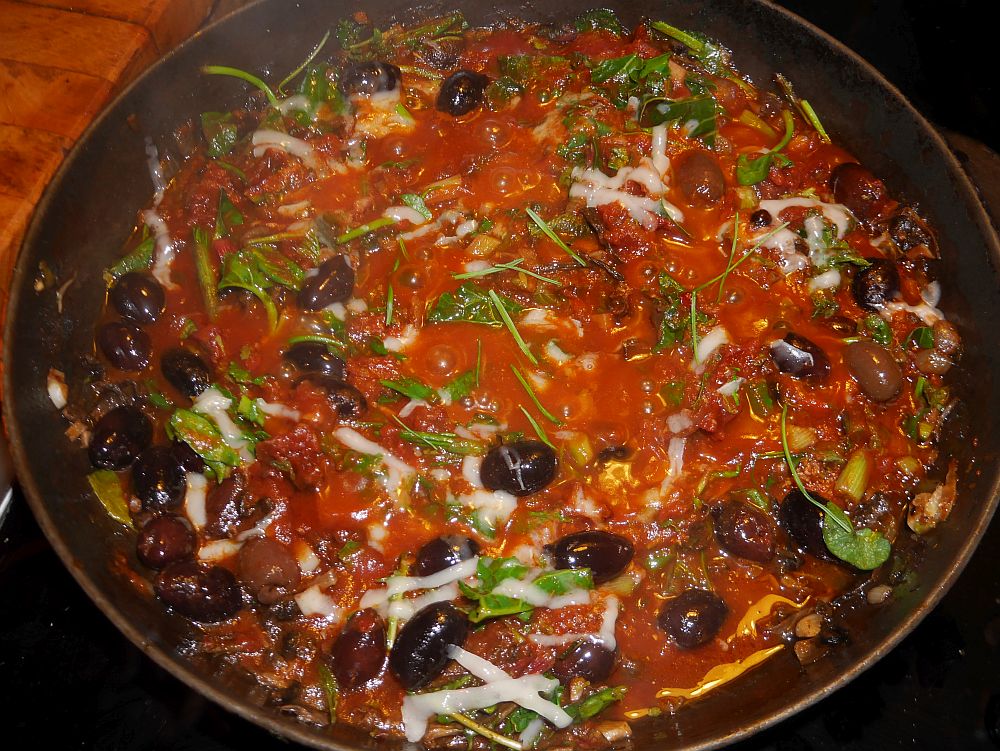
Belated happy birthday to me
Most years since I’ve followed this tradition on or near my birthday, no chips this year as the potatoes have run out and nowadays the macaroni cheese is mixed with masses of green stuff both from the garden and, yesterday, fiddleheads harvested on the Homla walk. This is more or less the only time in the year I have dessert and the only time I eat sugar…in rhubarb crumble, also with family roots back to the 60s :)
rhubarb crumble, also with family roots back to the 60s :)
Perennial vegetable tempura
See also https://saladdy.wordpress.com/2014/04/25/tempura-day
..includes ostrich fern, blanched lovage, Udo, perennial kale, moss-leaved dandelion, Allium victorialis, nettles, Aster scaber, scorzonera shoots, Campanula latifolia, Oca, Myrrhis, Allium scorodoprasum, garlic, Allium ursinum, Ligularia fischeri (first time), sea kale, Primula veris “Red Strain”, Rumex acetosa, Alliaria petiolata and a few others…

